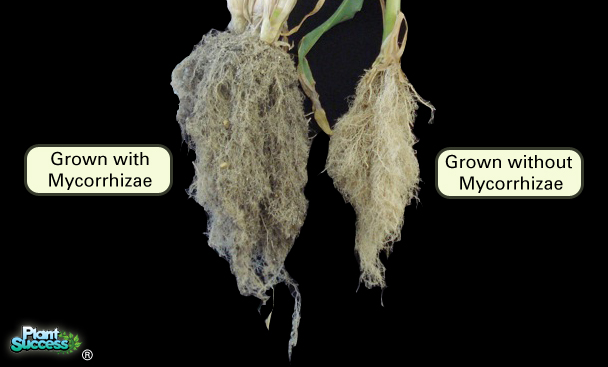Liquid Endomycorrhizal Inoculum
Liquid Endomycorrhizal Inoculum is excellent for drench or seed inoculant applications in a concentrated liquid with 4 top performing endomycorrhizal fungi in purified water.
Crop Inoculum, Endomycorrhizae & Ectomycorrhizae Fungi
Microbial inoculants also known as soil inoculants or bioinoculants are agricultural amendments that use beneficial rhizosphericic or endophytic microbes to promote plant health. Many of the microbes involved form symbiotic relationships with the target crops where both parties benefit (mutualism). While microbial inoculants are applied to improve plant nutrition, they can also be used to promote plant growth by stimulating plant hormone production.
Research into the benefits of inoculants in agriculture extends beyond their capacity as biofertilizers. Microbial inoculants can induce systemic acquired resistance (SAR) of crop species to several common crop diseases (provides resistance against pathogens). So far SAR has been demonstrated for powdery mildew, take-all, leaf spot (Pseudomonas syringae, Ramos Solano et al., 2008) and root rot.
The rhizobacteria commonly applied as inoculants include nitrogen-fixers, phosphate-solubilisers and other root-associated beneficial bacteria which enhance the availability of the macronutrients nitrogen and phosphorus to the host plant. Such bacteria are commonly referred to as plant growth promoting rhizobacteria (PGPR).
The most commonly applied rhizobacteria are Rhizobium and closely related genera. Rhizobium are nitrogen-fixing bacteria that form symbiotic associations within nodules on the roots of legumes. This increases host nitrogen nutrition and is important to the cultivation of soybeans, chickpeas and many other leguminous crops. For non-leguminous crops, Azospirillum has been demonstrated to be beneficial in some cases for nitrogen fixation and plant nutrition.
For cereal crops, diazotrophic rhizobacteria have increased plant growth, grain yield, nitrogen and phosphorus uptake, and nitrogen, phosphorus. Rhizobacteria live in root nodes, and are associated with legumes.

Can pass #50 screen
4 species Endomycorrhizae
3.6 million Endo Propagules per Gallon
Excellent for Drench Applications
For Pricing & Packaging Options: [email protected]